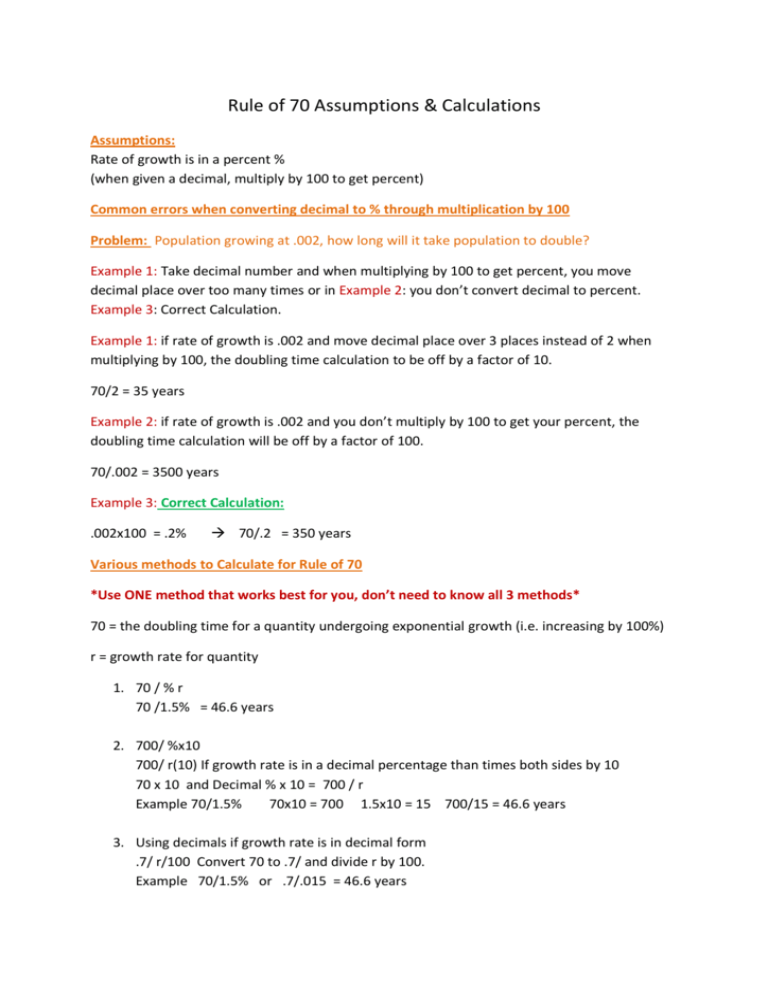Rule of 70 Assumptions & Calculations
advertisement

Rule of 70 Assumptions & Calculations Assumptions: Rate of growth is in a percent % (when given a decimal, multiply by 100 to get percent) Common errors when converting decimal to % through multiplication by 100 Problem: Population growing at .002, how long will it take population to double? Example 1: Take decimal number and when multiplying by 100 to get percent, you move decimal place over too many times or in Example 2: you don’t convert decimal to percent. Example 3: Correct Calculation. Example 1: if rate of growth is .002 and move decimal place over 3 places instead of 2 when multiplying by 100, the doubling time calculation to be off by a factor of 10. 70/2 = 35 years Example 2: if rate of growth is .002 and you don’t multiply by 100 to get your percent, the doubling time calculation will be off by a factor of 100. 70/.002 = 3500 years Example 3: Correct Calculation: .002x100 = .2% 70/.2 = 350 years Various methods to Calculate for Rule of 70 *Use ONE method that works best for you, don’t need to know all 3 methods* 70 = the doubling time for a quantity undergoing exponential growth (i.e. increasing by 100%) r = growth rate for quantity 1. 70 / % r 70 /1.5% = 46.6 years 2. 700/ %x10 700/ r(10) If growth rate is in a decimal percentage than times both sides by 10 70 x 10 and Decimal % x 10 = 700 / r Example 70/1.5% 70x10 = 700 1.5x10 = 15 700/15 = 46.6 years 3. Using decimals if growth rate is in decimal form .7/ r/100 Convert 70 to .7/ and divide r by 100. Example 70/1.5% or .7/.015 = 46.6 years

